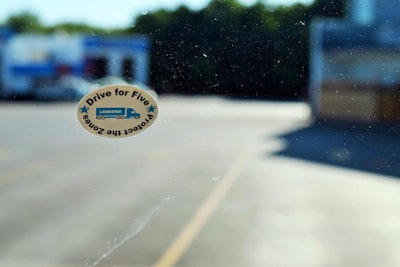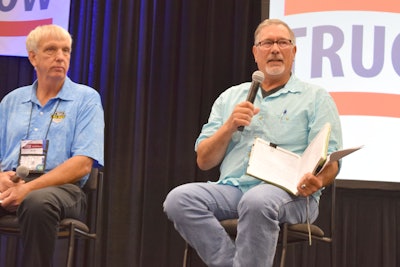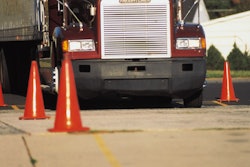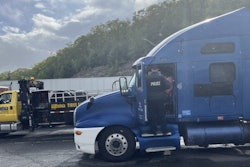 Got your own example of a do-it-yourself solution to a problem related to truck equipment, safety or the owner-operator business? Send your story to [email protected] with the “highway hacks” subject line to be considered for the monthly feature.
Got your own example of a do-it-yourself solution to a problem related to truck equipment, safety or the owner-operator business? Send your story to [email protected] with the “highway hacks” subject line to be considered for the monthly feature.As it is for any driver, for owner-operator and Overdrive Extra blog contributor Gary Buchs, safety on the road is multifaceted. But the No. 1 thing he emphasizes in any conversation with another trucker or the myriad teen drivers and other motorists he encounters is what should dominate your focus – that which you have the most control over. He’s talking about the distance between yourself and the vehicle in front of you.
A somewhat generous 700 feet is his rule of thumb for ideal following distance, computed utilizing the oft-referenced 100 feet for every 10 miles per hour. Several years ago, after he invested in a dashcam, he was reviewing some of the footage captured and noticed several situations in which he felt, “oh I was following way too close there,” he says. “I began to recognize behaviors that I probably shouldn’t be doing. I self-evaluated with my own dashcam footage.”
Buchs, like so many of you, hauls in a truck built well before whiz-bang factory-equipped radar, lane-departure warnings, and automatic braking became something of a standard for owners opting into the systems. He devised a simple following distance cheat. It involves a sticker or small piece of tape placed on the windshield in his line of sight.
 This picture shows the sticker in question, “my low-tech solution for following distance and speed and space management,” Buchs says. The “Drive for Five” language on it refers to the zones around a truck traveling on the highway where at any moment a motorist may be lurking. The slogan is a “reminder that you want to drive safe to protect them. You don’t want to do anything to harm them.”
This picture shows the sticker in question, “my low-tech solution for following distance and speed and space management,” Buchs says. The “Drive for Five” language on it refers to the zones around a truck traveling on the highway where at any moment a motorist may be lurking. The slogan is a “reminder that you want to drive safe to protect them. You don’t want to do anything to harm them.”How he positioned it to assist in following distance management:

- Find a level area such a large parking lot where you can effectively pace off 700 feet in front of your truck.
- Mark the 700-feet spot out front of the grille with a cone and return to your truck.
- Making sure your seat is aired up and positioned where you would normally sit in it while driving, place sticker on the windshield spot that corresponds with your line of sight to the cone 700 feet ahead.
“I use the sticker as a line of reference in my line of sight for that 700 feet,” Buchs says. “Everything below that line of sight, below that sticker, that’s the area I need to try to maintain as following distance. If someone pulls into that, that’s a reminder to slow down.”
It’s proved an effective method of increasing self-awareness, he adds. “It’s a kind of self-check, and it’s definitely help me retrain myself.”
 Buchs (right), speaking as part of a panel discussion in Overdrive‘s Partners in Business seminar series at GATS in August.
Buchs (right), speaking as part of a panel discussion in Overdrive‘s Partners in Business seminar series at GATS in August.Results? Buchs in recent times has challenged himself to maintain appropriate following distance without hitting his brakes on a regular route of his – coming out of Indiana on I-94 through Gary and on I-80 to I-294 around the south end of the Chicago metro.
“Anyone familiar with the area knows it’s slightly less than a traffic nightmare, even on a good day,” he says. “I challenged myself to be able to drive through Gary along the expressway up to I-294” around the west end of the metro area – “to try to keep my spacing such that I don’t have to hit my brakes. If you stay at or a little below the speed limit, or a touch below traffic speed if it is slower, there’s times I got 10 miles and never had to brake.”
Traffic around him, meanwhile, is “constantly speeding up and slowing down – there’s safety risk in that, coming up too fast on people, and then there’s the expense. Fuel cost, gas or diesel,” wasted every time the brakes are applied.
Catch all installments in the “Highway Hacks” series via this link.













